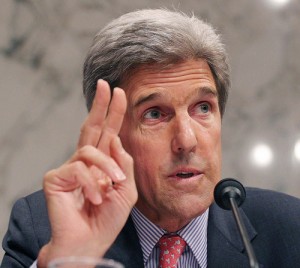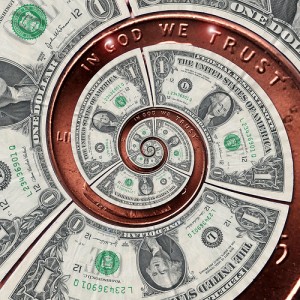Last week’s NY Times Sunday Magazine featured Nobel prize-winning economist Paul Krugman’s take on climate economics. Krugman notes that climate modelers have gained “enormous credibility” by successfully predicting the past 20 years of global warming. He concludes that climate trends over decades (which wash out short-term weather fluctuations), show that “the planet is indeed warming” which will lead to “massively disruptive events, like the transformation of the Southwestern United States into a permanent dust bowl over the next few decades.”
Krugman calls for the use of economic tools to curb the climate threat. He deftly articulates how (“Pigovian”) taxes discourage pollution by placing some of the “externalized” cost of pollution back on polluters, without the inefficiency and intrusiveness of regulations. He notes that a “cap-and-trade system produces the same incentives to reduce pollution… with the price of licenses effectively serving as a tax on pollution.” He explains:
A pollution tax… imposes costs on the private sector while generating revenue for the government. Cap and trade with auctioning… is just like a tax. [But current legislative proposals] involve[s] handing out licenses to existing players, so the potential revenue goes to industry instead of the government… as a way to partly compensate some of the groups whose interests would suffer if a serious climate-change policy were adopted. This can make passing legislation more feasible.
Krugman also acknowledges Dr. Hansen’s (and our) point that cap/trade punishes individual initiative to reduce GHG emissions. But Krugman never mentions the possibility of a carbon tax with revenue returned directly to the public, which should do even more to make passing legislation feasible and would avoid the volatility, manipulation and the need for “offsets” that effectively eviscerate the “emissions certainty” of a cap. Moreover, returning revenue to consumers rather than supporting “incumbent technologies” would encourage consumers to make the choices needed to speed our transition to a green economy.
Krugman confronts the problem of discounting the cost of future climate damage. Normal discounting (typically applied to business investments) drastically reduces the present value of future gains or losses; such discounting thus supports only small investments and low carbon taxes to avoid future climate damage. Siding with Sir Nicolas Stern, Krugman concludes that such large discounting is unfair to future generations; it effectively assumes away the potential for global catastrophe. Thus, despite his political judgment about cap-and-trade, Krugman’s reasoning supports the view that a substantial carbon price with a serious ramp-up is needed.

 The Senate climate debate detoured from cap-and-trade legislation today as the Energy and Natural Resources Committee weighed alternatives like a carbon tax or even sector-specific limits on power plants.
The Senate climate debate detoured from cap-and-trade legislation today as the Energy and Natural Resources Committee weighed alternatives like a carbon tax or even sector-specific limits on power plants. In an earlier part of
In an earlier part of  economists who’ve considered the question, I’m convinced that a clear, transparent, gradually-increasing price on carbon pollution is essential to spur energy conservation as well as development and implementation of alternatives to fossil fuels. A carbon tax, with revenue recycled directly to households to build political support and mitigate the economic impacts of what portends to be a decades-long trek to a low carbon economy, offers a real “game changer” to move broadly enough to substantially mitigate climate catastrophe.
economists who’ve considered the question, I’m convinced that a clear, transparent, gradually-increasing price on carbon pollution is essential to spur energy conservation as well as development and implementation of alternatives to fossil fuels. A carbon tax, with revenue recycled directly to households to build political support and mitigate the economic impacts of what portends to be a decades-long trek to a low carbon economy, offers a real “game changer” to move broadly enough to substantially mitigate climate catastrophe. The House
The House  This perverse consequence of a carbon cap makes perfect sense, unfortunately. Consider a commuter who, independent of any price signal or federal legislation, resolves to give up solo car commuting for a carpool. Under a cap system, this “exogenous” reduction in demand for carbon emitting will lead to a slightly lower emission permit price — thus stimulating some additional use of fossil fuels elsewhere. The incremental usage might be a reciprocal departure from a carpool, or cranking up the heat, or a return to buying bottled water rather than refilling at the tap … or any of a thousand other ways to burn carbon. The result, in the end, will be the same: virtue in one arena will be offset elsewhere, due to the price-equilibrium-seeking mechanism of the cap.
This perverse consequence of a carbon cap makes perfect sense, unfortunately. Consider a commuter who, independent of any price signal or federal legislation, resolves to give up solo car commuting for a carpool. Under a cap system, this “exogenous” reduction in demand for carbon emitting will lead to a slightly lower emission permit price — thus stimulating some additional use of fossil fuels elsewhere. The incremental usage might be a reciprocal departure from a carpool, or cranking up the heat, or a return to buying bottled water rather than refilling at the tap … or any of a thousand other ways to burn carbon. The result, in the end, will be the same: virtue in one arena will be offset elsewhere, due to the price-equilibrium-seeking mechanism of the cap. Of course, emission targets in 2050 have limited practical meaning — present leaders will be dead or doddering by then — so these differences may be patched up. The important point is that other nations are unlikely to make real concessions on emissions if the United States is not addressing the climate matter seriously.
Of course, emission targets in 2050 have limited practical meaning — present leaders will be dead or doddering by then — so these differences may be patched up. The important point is that other nations are unlikely to make real concessions on emissions if the United States is not addressing the climate matter seriously. There is little hope of shifting to a low-carbon economy without a clear, transparent price on carbon emissions. While ACESA’s proponents claim that its cap-and-trade provisions “
There is little hope of shifting to a low-carbon economy without a clear, transparent price on carbon emissions. While ACESA’s proponents claim that its cap-and-trade provisions “ Worse, if a larger share of the GHG reductions comes from “other” greenhouse gases such as methane and nitrous oxide, then reductions from fossil fuel burning will be disproportionately smaller. While that won’t necessarily hurt the climate, it will mean that many of the ancillary but vital benefits from reducing carbon emissions, such as reduced oil dependence and diminished environmental destruction from coal mining, will be watered down.
Worse, if a larger share of the GHG reductions comes from “other” greenhouse gases such as methane and nitrous oxide, then reductions from fossil fuel burning will be disproportionately smaller. While that won’t necessarily hurt the climate, it will mean that many of the ancillary but vital benefits from reducing carbon emissions, such as reduced oil dependence and diminished environmental destruction from coal mining, will be watered down.